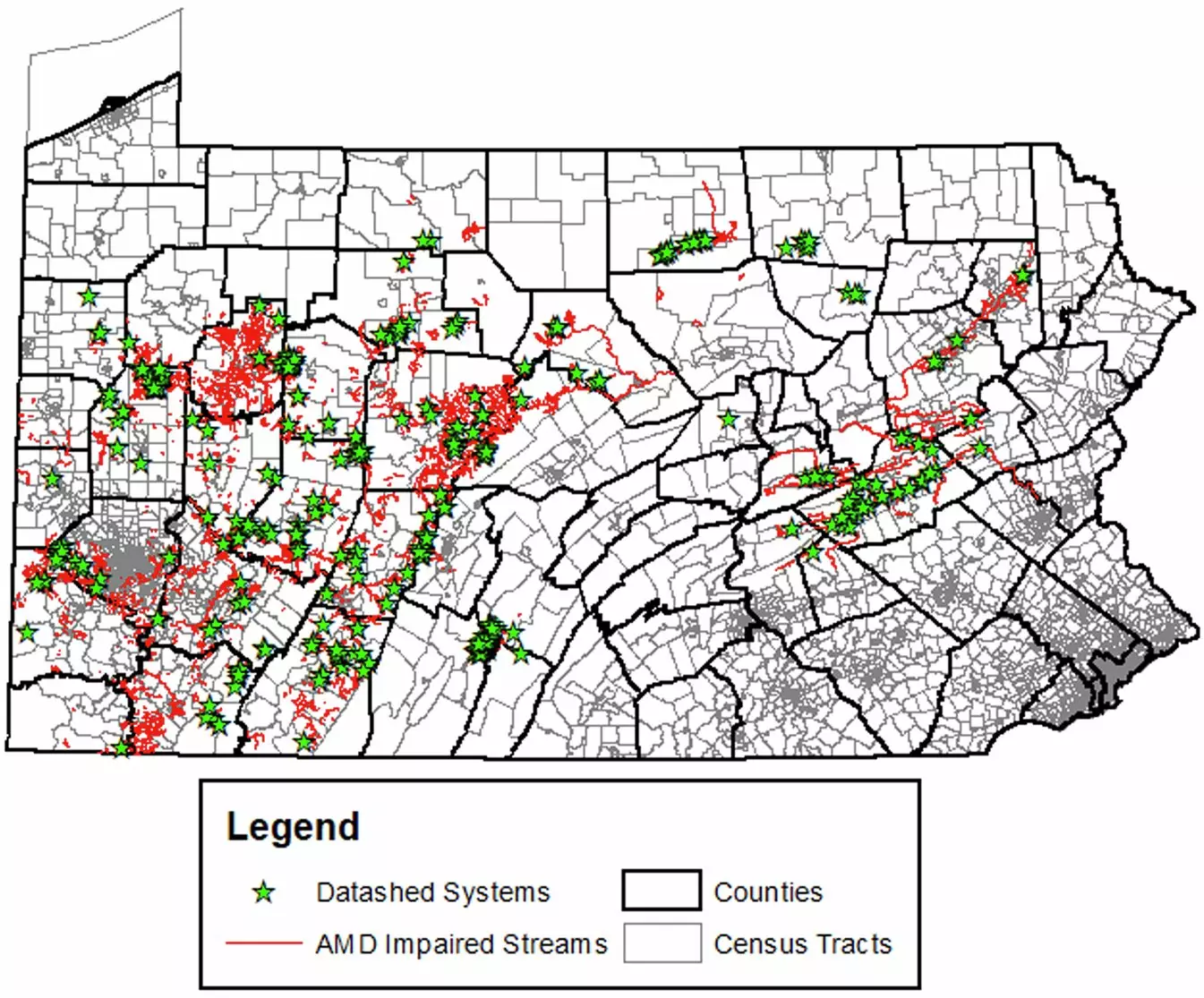Recent research conducted by the University of Pittsburgh underscores the pressing need to address the legacy of abandoned mine drainage (AMD) in Pennsylvania. This state, which has been significantly shaped by the coal industry’s legacy, now finds itself grappling with an environmental issue that heavily impacts its waterways and, by extension, its vulnerable communities. While progress has been made through both state and federal funding initiatives, the research reveals the deficiencies in current appropriations necessary for the long-term treatment of mine drainage and other associated environmental hazards.
Over the last 35 years, Pennsylvania has successfully implemented over 300 systems designed to treat mine drainage before it impacts nearby streams. Funded by various stakeholders including state agencies and environmental groups, these systems have exhibited varying degrees of success in mitigating the destruction wrought by acidic discharges. However, as the research indicates, the current allocation of resources is grossly inadequate in meeting the challenges posed by the remaining 5,600 miles of impaired waterways statewide.
Jeremy Weber, a professor at the University of Pittsburgh, draws attention to the stark economic implications of untreated mine drainage for local communities. The research highlights that areas most affected by AMD are often economically disadvantaged—residents in these locales earn about 30% less than those in unaffected areas. The compounded effect of economic vulnerability and environmental degradation poses a significant barrier to community resilience and development. The struggle for these communities is not merely one of environmental preservation but one of economic survival, as acidic water can adversely affect local ecosystems and public health.
The 2021 Infrastructure and Investment and Jobs Act (IIJA), designed to funnel $16 billion into the cleanup of abandoned industrial sites, provides a possible lifeline. However, Weber notes the lack of clarity surrounding the beneficiaries of this funding and its ultimate efficacy. While these appropriations promise to combat both economic stagnation and environmental decay, the translation from policy to practice remains uncertain.
The study’s authors found a stark demographic contrast between communities with and without mine drainage issues. Approximately 18.5% of Pennsylvania’s population—roughly 2.4 million people—reside in areas where streams are impacted by AMD. Alarmingly, 500,000 of these individuals live in areas where half or more of their streams are impaired. The correlation between economic hardship and environmental degradation suggests that these communities face an uphill battle not only in maintaining quality of life but in attracting investment and resources.
The disparity in housing values is another telling statistic; homes in affected areas are valued around 50% less than those in unaffected regions. This not only indicates a cycle of economic decline but also emphasizes the broader systemic issues tied to legacy pollution. The economic ramifications of AMD extend beyond environmental health; they come at a cost that presents hurdles in securing both state and federal support for rejuvenation efforts.
Despite these challenges, the research highlights a positive narrative surrounding existing treatment systems. By analyzing inflow and outflow water quality data from 265 treatment sites, the co-authors demonstrated that these systems operate effectively in improving water quality. Inflow water often had an average pH similar to that of tomato juice (4.3), whereas outflow was significantly better, averaging around a pH of 6. This success shows promise for scaling efforts to clean up impacted waterways and suggests that with adequate resources, continued progress can be achieved.
It’s worth noting that while the current cleanup efforts have proved economical—protecting streams at a cost of approximately $5,700 per kilometer annually—much more is needed to address the broader scope of the issue. An estimated $1.5 billion will be necessary over the next 25 years just to address AMD, with an additional $3.9 billion needed for other liabilities such as sinkholes and unstable mine shafts.
The findings from this research illustrate that Pennsylvania stands at a crossroads. The need for a comprehensive approach to managing AMD is urgent, involving not only the treatment of contaminated water but also targeted support for economically vulnerable communities. Achieving this will require a concerted effort from policymakers, environmental groups, and the communities themselves. By securing adequate funding and ensuring transparency in the appropriation of these investments, Pennsylvania may be able to turn the tide on AMD, improving both environmental conditions and the socio-economic fabric of affected communities. The lessons learned here could serve as a blueprint for other regions struggling with the legacy of industrial pollution in the United States.


Leave a Reply